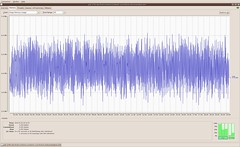Q: What does it mean when the zone is made "non-voting"?
A: It means that the zone will not cause the HVAC unit to turn on, if it is the first zone to be calling for heating or cooling. Otherwise, it will behave exactly like it normally does - once the HVAC unit is running, this zone will be satisfied, even if it is the last one to be satisfied.
Keep in mind that zone's voting status is subject to schedule - a zone can be voting in one period and non-voting in another.
Use Cases
Good Case
This feature was originally intended to be used with small spaces like closets and bathrooms, which can overheat or cool down very quickly and cause HVAC unit to turn on and off unnecessarily often ("short cycling") - this is bad on the HVAC unit life, efficiency (it is "warming up" for 5 to 20 minutes, depending on the nature (A/C, heat pump, furnace, electric) and implementation), and electric or gas bill.
If the zone you set to non-voting status is satisfied before other zones are, it is a right thing to do.
Bad Case
This feature is
not intended to take care of big rooms for the period when they are not occupied. This can be taken care by either setting those zones to
"off" status, or lowering the setpoint (for heating) or raising it (for cooling).
If the zone you set to non-voting status still demands cool or heat after other zones are already satisfied,
you're misusing the feature.

